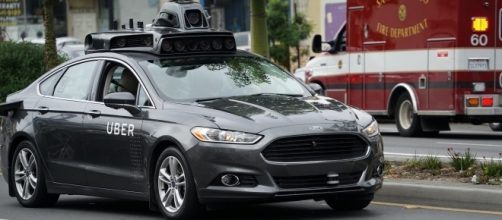Self-driving cars, autonomous trucks, and robots that can run every aspect of a household are supposed to be just around the corner. But as the exit of major leaders from companies developing new technology in the Artificial Intelligence (AI) space shows, building machines that are smarter than humans is proving harder and taking longer than many thought.
Perhaps the most visible example of AI’s struggles can be found in the experience of Gary Marcus, an innovative scientist who joined Uber last December when his company – Geometric Intelligence – was acquired by the ride sharing firm.
Marcus didn’t stay long. He announced earlier this month that he would be stepping down from his post in charge of Uber’s AI Lab, amid reports that the company’s crucial self-driving car project was in turmoil.
Former Uber executive has no comment on departure
Marcus appeared on Monday at the MIT Technology Review’s “EmTech Digital Conference” in San Francisco, and he had very little to offer about his short-lived Uber career. “Yeah, done, next question,” was all Marcus said when gently asked about Uber by Technology Review editor Jason Pontin. Uber’s self-driving car project hit a speed bump last Friday when one of their autonomous vehicles crashed in Arizona, forcing the company to briefly suspend the pilot program.
While tight-lipped about Uber, Marcus still had plenty to say about the future of AI and it wasn’t especially positive. The scientist has been openly critical of the huge amounts of data that engineers are using to train computers to perform a wide range of tasks. “We’re great at targeting advertisements, but that’s not what AI is supposed to be for,” Marcus told conference attendees.
While he was reluctant to talk about self-driving car technology, Marcus appeared concerned that artificial intelligence still remained a long ways off in being able to reliably navigate an automobile through the complexities of daily motoring. Citing industry acceptance in other areas of AI with at least 90 percent reliability, Marcus pointed asked, “Would you accept a pedestrian protector in a car that’s only 97 percent correct?”
Baidu sees progress despite high-profile resignation
However, other speakers at the EmTech Digital conference were more optimistic about AI’s progress.
Adam Coates, the director of Chinese search giant Baidu’s Silicon Valley AI Lab, described yesterday how the explosion of mobile devices was enabling his company to use more gathered data to make major advances in speech recognition. “Users really expect human-level recognition,” said Coates. “It’s crucial for these AI products to have really amazing speech capability.”
Even Coates’ presentation was overshadowed by changes inside his own company. After luring the former Stanford and Google researcher Andrew Ng to lead Baidu’s AI work in 2014, the firm was rocked last week when the highly-respected scientist announced that he was leaving. Ng’s departure, coupled with the Marcus resignation at Uber this month, shows that while big companies are making large bets on AI, some of the brightest minds in the field are not totally sold on the private sector’s strategy.
What all of this means for the direction of AI over the next one to two years remains to be seen. “The future of AI is always moving,” said Richard Socher, who also presented at the conference and is leading a machine learning project for Salesforce. As recent changes at companies like Uber indicate, the question now is whether AI can bring the rest of us along for the ride.

